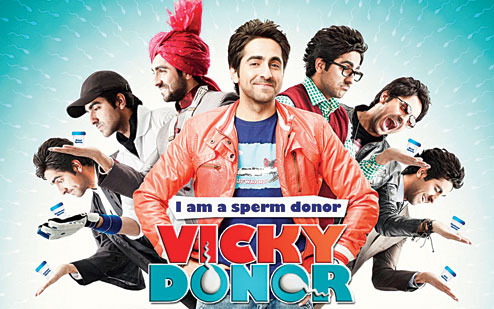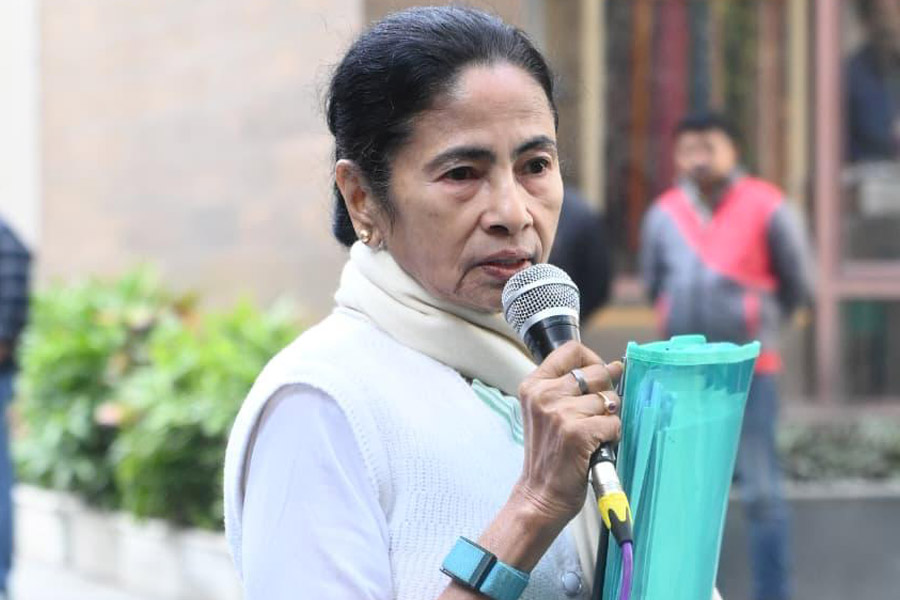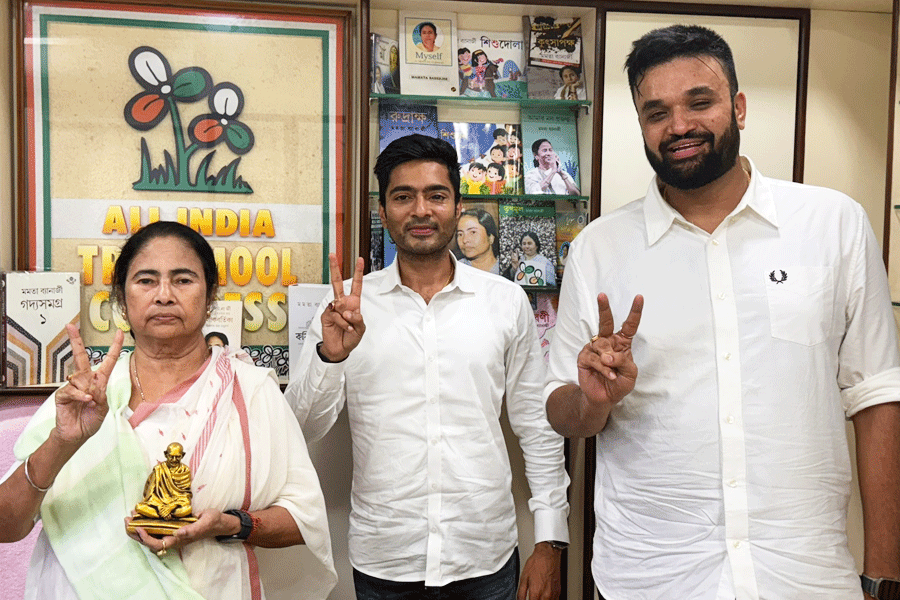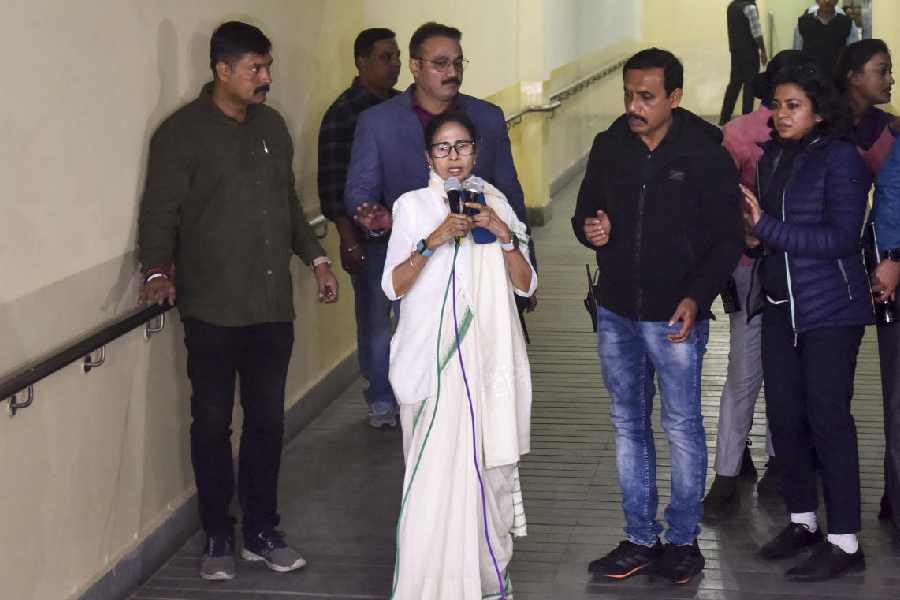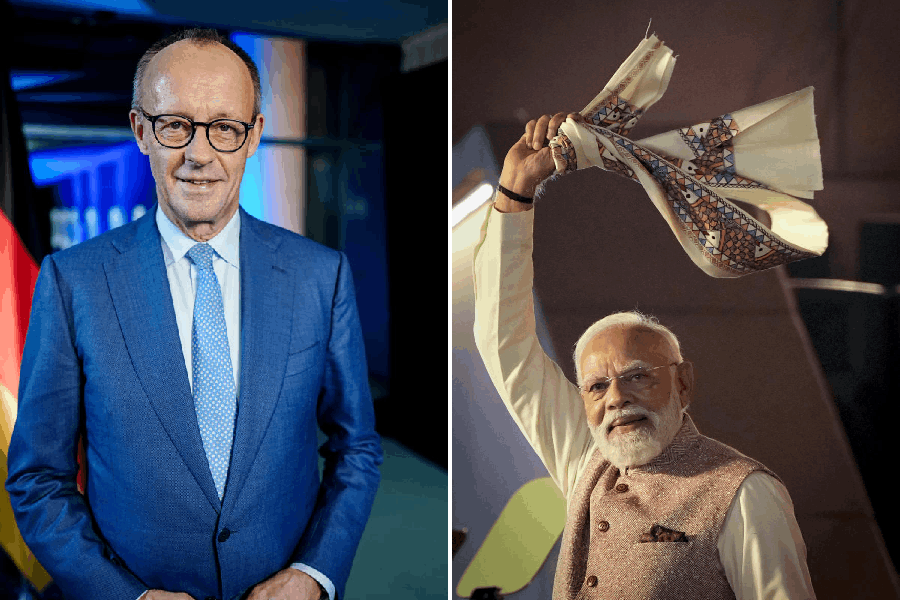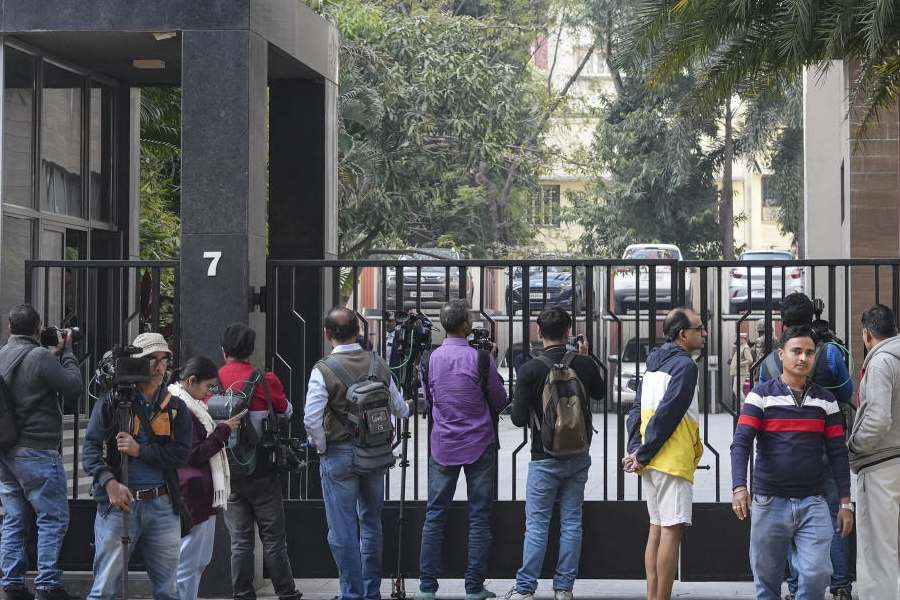 |
| Vicky Donor made it okay for Indians to talk about assisted reproduction. But it showed sperm donation as a very good money-making scheme, whereas semen donors in reality get Rs 1,000 per donation. Infertility clinics in the city keep getting calls from young men wanting to get rich quick and angrily quoting Vicky Donor when they are told the actual rates! |
In 2005, Bhagirathi Neotia Woman & Child Care Centre started an infertility clinic at its Park Street address called Genome. Come 2013, the clinic had to move out of the parent body and into a restored heritage bungalow on Shakespeare Sarani. The need to cut the umbilical cord was prompted not just by a rapid increase in number of patients but also the need for speciality fertility care.
According to a World Health Organisation (WHO) study completed in 2004, one in every four couples in developing countries was affected by infertility. Nine years on, those numbers have only grown.
That brings us to the basic question, what is infertility? In layman’s terms, it’s the inability to conceive after one year of adequate unprotected intercourse. The timeline is reduced to six months of intercourse if the woman is over 35 years old.
After studying 277 surveys on the subject, WHO has concluded that South Asia has improved its figures in primary infertility, which means more couples are becoming first-time parents with the help of assisted reproduction.
In Calcutta, we don’t need serious-looking global reports to tell us this. Just look around and the profusion of infertility clinics will tell you that it’s a sunshine industry.
Mother & spoke
Though the science of assisted reproduction is as old as the first test-tube baby, Louise Brown, in 1978 in the UK, and the second IVF one, Durga, in Calcutta just two months later by Subhash Mukhopadhyay — whose life inspired the Tapan Sinha film Ek Doctor ki Maut — the new kid on the block is protocol-driven treatment, different from doctor-driven treatment.
Calcutta has long been familiar with clinics like BIRTH on Elgin Road, run by Dr Gautam Khastgir, or the GD Institute for Fertility Research set up by Dr Sudarsan Ghosh Dastidar on SP Mukherjee Road, or the Institute of Reproductive Medicine, run by Dr B.N. Chakrabarty in Salt Lake, to just name a few.
But for some newer clinics, the thrust is on standardisation of treatment that can be carried out at multiple centres, depending on a couple’s convenience, thus saving travel and related costs.
Avishek Biswas, the business head of Genome, explained the basics of protocol-driven treatment. “Infertility treatment is time-consuming, where a couple may need between one month and six at least, to conceive. For working people, taking such long leave is not feasible. So we have a mother centre and spoke centres.”
A 35-year-old from Behrampore had suffered three miscarriages before she came to Genome, when it was on Park Street. In the absence of any identifiable cause for the miscarriages, the Genome team carried out a work-up into her ovarian reserve and found she was on her way to ovarian failure. They counselled her to go in for egg donation and she eventually gave birth to a healthy boy.
Anamika from Durgapur was unable to conceive because of a rare case of MRKH Syndrome, where a woman has underdeveloped or missing sex organs. She went through IVF in Calcutta and conceived in May 2012.
Both women and their families had to travel to Calcutta multiple times for treatment. With standardisation of procedures, couples can start the process in Calcutta and carry it forward in their hometowns.
For Genome, the Shakespeare Sarani clinic is the mother centre, and there’s a similar one at Siliguri, which has the same infrastructure. Districts will have spoke centres, all connected to the mother centre.
Genome’s spoke centres are expected to come up in Kalyani and Midnapore soon. By the end of the year, they wish to expand to other eastern Indian cities like Patna and Raipur. And then the rest of the country. So, eventually a couple may start treatment in Calcutta but be able to continue with it in New Delhi or Naihati.
Technology today allows doctors to monitor a patient’s progress from afar. The doctor can carry out counselling and treatment in real time through video link.
Nova IVI, which describes itself as an “institutional fertility clinic”, is also present in Bangalore, Chennai, Mumbai, New Delhi and Ahmedabad.
“An institutionalised clinic has an organisational structure where no particular doctor owns the clinic,” said Saugata Mukherjee, general manager-operations of Nova IVI. The Calcutta centre is located near Park Circus Bridge No. 4, towards Topsia. Just nine months old, it has already handled over 500 cases.
Man up!
All the doctors Metro spoke to revealed that men still find it difficult to accept their role in childlessness. One even said that men from the districts were more open to talking about infertility issue than the men from Calcutta proper.
“Men think it’s a slight on their manliness. Some don’t even want to get a semen analysis done. They just want their wives to go through the treatment,” said a Genome employee.
Agreed Mukherjee of Nova. “The cause for infertility is 50:50 between men and women. We have noticed that patients who come from districts are more aware of these problems and are better at doctor shopping than city couples.”
Doctors make it clear that infertility treatment has to be dealt with at the family level. The treatment usually includes multiple rounds of counselling. Sometimes the pressure of conceiving makes a marriage dysfunctional. Moreover, during treatment, a woman is given hormones so she and her spouse — and sometimes even the larger family — need to be counselled about what kind of changes she will experience.
In many cases, the gametes (egg or sperm) of one partner are not good enough for fertilisation, requiring third-party reproductive services. This means donor sperms, eggs or surrogacy. But there are still societal taboos about these things and the laws are hazy.
Vicky Donor effect
That brings us to Vicky Donor. The 2012 Bollywood hit starring Ayushmann Khurrana and Yami Gautam brought infertility right into middle-class India’s living room. Suddenly it was okay to know and talk about sperm donation.
But Avishek of Genome says the Shoojit Sircar film brought with it a curious set of problems. “Sperm donation was shown as a very good money-making scheme but that’s not true. Semen donors get Rs 1,000 per donation. Oocyte or egg donors get between Rs 25,000 to Rs 30,000 each time,” he pointed out. Genome keeps getting calls from young men wanting to get rich quick and angrily quoting Vicky Donor when they are told the actual rates!
Also, according to doctors, Yami Gautam’s character’s problem of tubular block as shown in the movie could have been treated with IVF. Tube block is the single biggest cause of infertility among women and the easiest to deal with.
The other discrepancy was showing 52 kids fathered by Vicky. A man is allowed to donate 75 times, but only six children can be conceived from one donor. Women can donate 15 times but since the extraction of eggs is much more complicated, 15 is a biologically impossible number, say doctors. Also, women donors must be married and mother of at least one child.
Laws and ICMR
Strangely, all this is not laid down in law. They can be found in the guidelines of the Indian Council of Medical Research (ICMR). A bill based on these guidelines, titled the Assisted Reproductive Technologies (Regulation) Bill, 2010, is yet to become a law. This despite the fact that the bill itself admits, “As of today, anyone can open infertility or assisted reproductive technology (ART) clinic; no permission is required to do so. There has been, consequently a mushrooming of such clinics around the country.”
The reason why the bill is not being passed, according to doctors, is that if the ICMR guidelines become a law, 90 per cent of infertility clinics in the country will have to shut shop.
But the law will come, however late, and according to the Genome management, their facilities “strictly” adhere to the ICMR guidelines and won’t face closure when the law is passed.
In the absence of strict laws, malpractices abound. And are routinely hushed up. Like the case of a girl in Mumbai who died during extraction of egg for donation. Not only was she unmarried, she was underage. Then there was a case of embryo mismatch, also in Mumbai, where embryos of two couples got switched after creation in the lab.
Inexact science
Couples walking into infertility clinics must be aware of the rates of success of the different procedures and the costs involved. This helps in dealing with the “yo-yo of hope and despair” as described by a Calcuttan who has been trying to get pregnant for four years.
The global success rate for IVF is 40 per cent. At Genome, which subjects itself to international audits, the rate is 35 to 38 per cent, while it’s 42 per cent at Nova. For IVI treatment, the global success rate is 12 to 15 per cent, at Genome, it’s 18 to 20 per cent.
That apart, 20 to 25 per cent of cases are attributed to “unexplained infertility”. This is when every indicator shows that a couple should conceive but they don’t, despite repeated treatment procedures.
A city-based infertility expert sums it up best: “The day this becomes an absolute science, we’ll be God.”
What is infertility?
The inability to conceive after one year of adequate unprotected intercourse. The timeline is reduced to six months of intercourse if the woman is over 35 years old.
NEW KID ON THE BLOCK
Assisted reproduction is moving out of the gynaecologist’s chamber into technology-driven speciality clinics
• Institutionalised clinics have an organisational structure where no particular doctor owns the clinic
• Infertility treatment is time-consuming, where a couple may need between one month and six at least. Spoke centres make it easier for working couples
• Patient’s progress can be monitored from afar through video link

